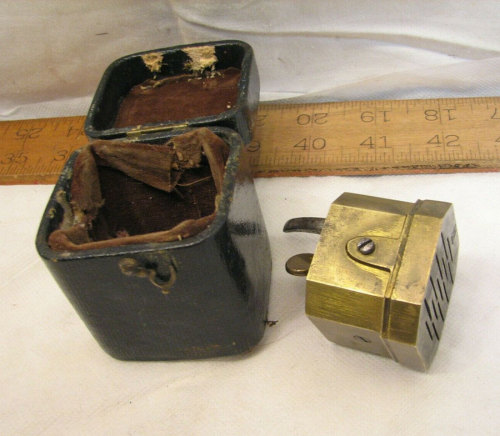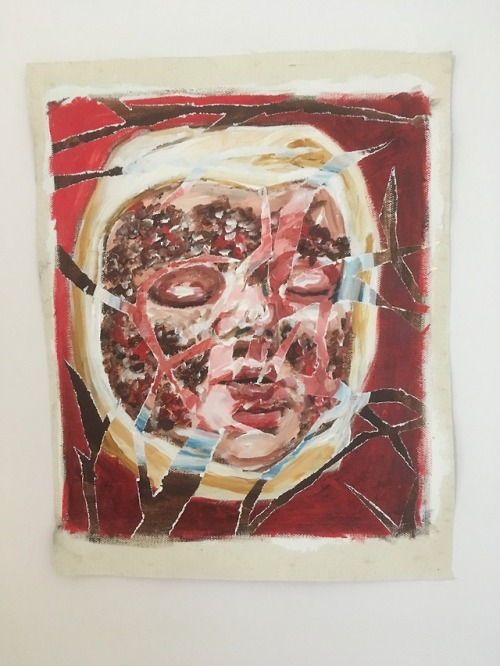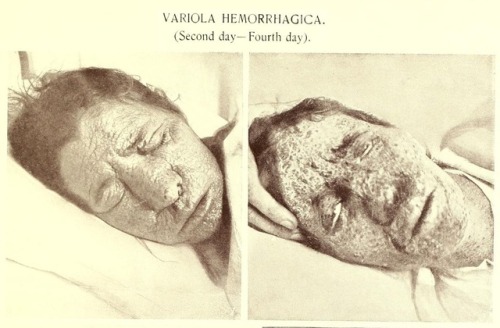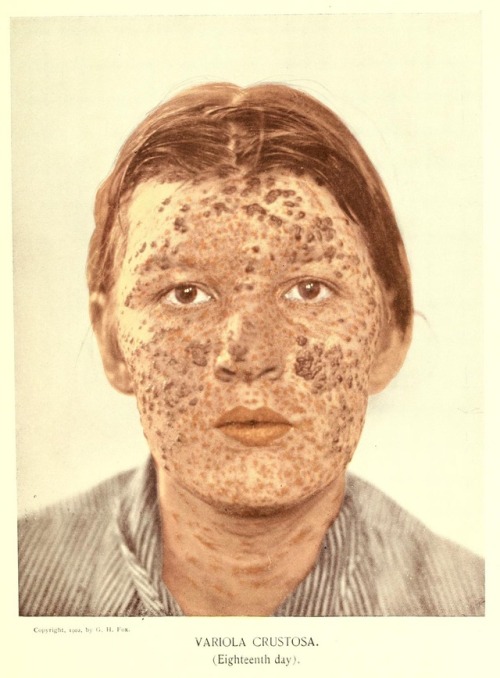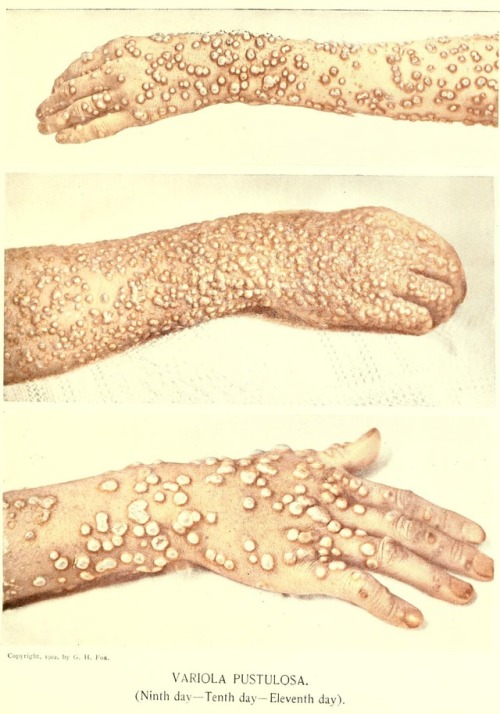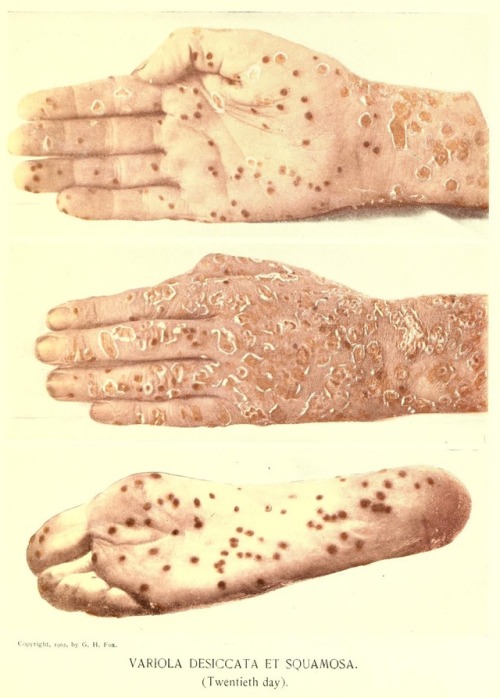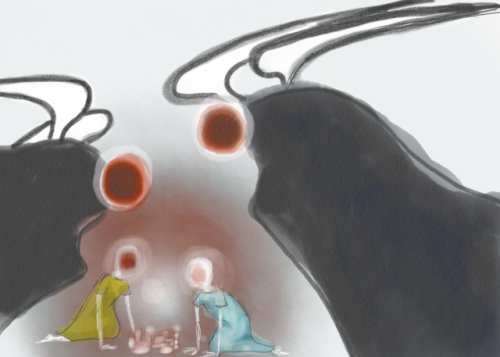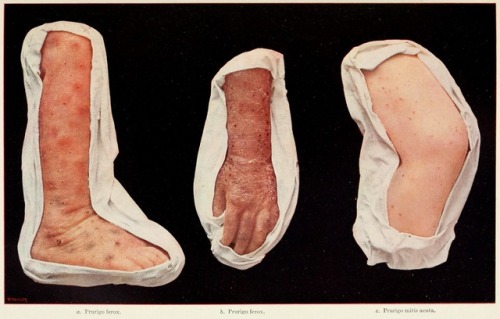#medical history
viareddit.com
For those who don’t know and don’t want to click thru to find out: Jonas Salk is the reason we in North America no longer live in terror of polio. He also refused to patent or profit from his vaccine. He also spent the last years of his life researching a vaccine for AIDS, long before that was cool and back when a lot of people were secretly hoping it really would just kill all the gays. So you’re damn right people applauded and gave free upgrades.
Reblogging again because this time I did click through, and because of the times in which we live: Jonas Salk was Jewish, and the child of immigrants.






Guest post from John Martin Rare Book Room
At UIowa’s Hardin Library for the Health Sciences
NICANDER OF COLOPHON (flourished 138-130 BCE) Theriaka; Tou autou Alexipharmaka [Greek title transliterated]. Theriaca; Eiusdem Alexipharmaca. Printed by John Soteris in 1530. 21 cm tall.
April is National Poetry Month, so we are highlighting the classic works of Nicander of Colophon. Nicander was a physician poet from the 2nd century BCE. We know he wrote many different works, but only two complete examples have survived.
The two works, Theriaca and Alexipharmaca, deal with poisons and venoms. Poems like these were thought to make scientific content and concepts easier to understand and remember. Nicander, though, was more interested in form and style, not necessarily accuracy. Indeed, his poems can be difficult to read and he did not seem to have much knowledge at all of toxicology. As Gow and Scholfield note in their Poems and poetical fragments, “his contorted style and fantastic vocabulary put him beyond the reach of scientists unless they are also Greek scholars…” (p. xi).
Nicander was born and raised in Clarus in western Asia Minor (near the larger Colophon, in what is now Western Turkey) during the reigns of the last kings of the Attalid Dynasty of Pergamon. Clarus was home to a large temple devoted to Apollo and there are several references to Nicander’s family as priests in the cult, including perhaps Nicander himself.
The longest of the hexameter poems, Theriaca, covers venomous animals. Nicander describes the animals, the symptoms associated with a bite or sting, and pharmacological recipes for treating them. The Alexipharmaca covers poisons that have been ingested orally from animals, plants, or minerals and their antidotes. Much like Theriaca, Nicander breaks the entries into a description of the poison, the symptoms, and recipes for antidotes. Nicander is also thought to be the first to suggest the use of leeches in a medicinal context, although many scholars believe he borrowed heavily from the Greek-Egyptian physician Apollodorus (fl. 250 BCE).
The first known print copies of the poems are in the 1499 edition of Dioscorides' De materia medica. The poems are also bound together in this item with the first Latin translation made by Johann Lonitzer (1499-1569). Lonitzer was a classical languages scholar, poet, and professor at Marburg in Germany. As can be seen from the image above, the cover of the book is cut from a piece of vellum manuscript waste (parchment from an older, handwritten work used in the binding of another book). It is heavily stained with ink spilled from an inkpot (tip of the hat to Collections Conservator Beth Stone for identifying the stain). Perhaps an apprentice or student faced the wrath of their instructor for using the book as a stand for their ink?
It also appears the cover was given conservation treatment at some point before we acquired it. As part of this treatment, the cover was removed. However, when it was reattached, the covers were reversed! Thus, the spine title is now upside down and the ink stains on the front actually originated on the back. Another example of all the amazing stories our books have to tell us beyond what is written on the page. Other than the mistreatment at the hands of the nameless, ink-spilling writer/illustrator, the book is in great condition. And other than some minor staining in the back (ink that bled through from the spill on the cover) and on the edges, the paper is especially in good shape. If you stop by the open house tonight, you’ll have a chance to take a look for yourself.
–Damien Ihrig, Curator of the John Martin Rare Book Room






Guest Post from John Martin Rare Book Room
At the Hardin Library for the Health Sciences
MORGAGNI, GIOVANNI BATTISTA (1682-1771). Opuscula miscellanea quorum non pauca nunc primum prodeunt, tres in partes divisa [Miscellaneous works, some of which are new, divided into three parts]. Printed by Giovanni Antonio Remondini at Remondiniana, Bassano del Grappa, 1763. Three volumes bound together. 39 cm tall.
This month we highlight a book currently receiving treatment from the UI Libraries Conservation and Collections Care. Collections Conservator, Beth Stone, is working to clean and stabilize one of our books from Giovanni Battista Morgagni (1682-1771).
Morgagni was an 18th-century Italian anatomist and physician. He is referred to as the “father” of modern pathologic anatomy. He stressed connecting the symptoms observed in the sick to the findings from their dissection. Symptoms, he felt, were “the cry of the suffering organs.” His work helped dispel the longstanding notion that most diseases were scattered throughout the body. Instead, he was able to demonstrate that they emerge from specific organs and tissues.
During his very long life, Morgagni was a prodigious worker and prolific writer. His three-volume Adversaria Anatomica (1706-1717) put him on the map. His most monumental work, De sedibus, et causis morborum per anatomen indagatis libri quinque, was published in 1761 and made him a legend among anatomists. Vast in scope, it is one of the most fundamentally important works in the history of medicine.
The book this month, however, is Morgagni's Opuscula miscellanea quorum non pauca nunc primum prodeunt, tres in partes divisa [Miscellaneous works, some of which are new, divided into three parts]. As stated in the title, this is a collection of writings on a variety of subjects, including letters to Giovanni Lancisi, an Italian physician, discussing how Cleopatra died.
Morgagni’s scholarly ability was apparent at an early age. At sixteen he was a pupil of Antonio Maria Valsalva at Bologna, and there he received the stimulus to devote his life to pathology. While pursuing postgraduate studies, he worked with Giovanni Santorini performing dissections. (Giovanni was clearly a very popular name at this time!)
By 1715 he took the chair of anatomy at Padua, a seat which he held with utmost distinction for many years. He was a brilliant and tireless investigator and, in addition to his work in medicine and anatomy, was a student of the classics and an archaeologist of repute.
Over his long career at the University of Padua, he taught thousands of students from dozens of countries. His teaching emphasized empirical data, direct observation, and experimentation.
Among several other structures, his name is most widely connected with the “Columns of Morgagni,” the fine, vertical folds of the anal canal.
As mentioned, if he was not teaching or dissecting, Morgagni was writing. Opuscula miscellanea shows his range and diverse interests. Along with discussing Cleopatra’s cause of death, it includes a biography of his mentor, Valsalva, a tract on gallstones, and a few more on legal issues.
Opuscula miscellanea has a lovely, soft paper cover. The cover shows the effects of age, use, and exposure to the environment, with scuffs, stains, and an overall darkening. Do not let that fool you, though, as this is still an effective binding. With a new housing from Conservation, Opuscula miscellanea will be around for a very long time.
Go here to read about Beth’s treatment for Opuscula miscellanea and more.
The annual JMRBR open house is April 20, from 4-7 pm. This is our first in-person event in quite some time and we’d love to see you there!
AN EXAMPLE OF AFRICAN MEDICAL SCIENCE. ILLUSTRATION OF AFRICAN DOCTORS IN 19TH CENTURY (1879) KAHARA,UGANDA PERFORMING A CAESARIAN SECTION. SUCCESSFUL EXAMPLES OF THIS OPERATION WERE VIRTUALLY UNKNOWN IN EUROPE AT THE TIME.
Africans were performing many advanced medical procedures long before they had been conceived in Europe this is just one of many examples.
The British traveler R.W. Felkin who reported this noted that the healer used banana wine to semi-intoxicate the woman and to cleanse his hands and her abdomen prior to surgery. He used a midline incision and applied cautery to minimize hemorrhaging. He massaged the uterus to make it contract but did not suture it; the abdominal wound was pinned with iron needles and dressed with a paste prepared from roots. The patient recovered well, and Felkin concluded that this technique was well-developed and had clearly been employed for a long time. Similar reports come from Rwanda, where botanical preparations were also used to anesthetize the patient and promote wound healing.
Reference: “Notes on Labour in Central Africa" published in the Edinburgh Medical Journal, volume 20, April 1884, pages 922-930.
Post link
This antique scarificator bloodletting device is among the latest batch of oddities for sale.
Post link

Pencil illustration of polycystic kidney disease.
Ever wanted to own a piece of my art? Now you have a chance, I have donated this piece to Kidney Care U.K. to raise funds for World Kidney Day. Head over to their auction page to place a bid and support a great organisation
Pharmacy jar (albarello) by Giacomo Mancini, “El Frate”,European Sculpture and Decorative Arts
Medium: Maiolica (tin-glazed earthenware)Gift of W. B. Osgood Field, 1902 Metropolitan Museum of Art, New York, NY
Post link
“Showing numerous incipient papules upon the face. Those upon the forehead were the first to appear and are most prominent. the cheeks present a characteristic leathery appearance.”
A Practical Treatise on Smallpox by George Henry Fox, 1903
Post link
“A case of moderate severity, with well-developed vesicles and characteristic grouping of lesions upon the face.”
A Practical Treatise on Smallpox by George Henry Fox, 1903
Post link
“Showing upon the face and cheeks a form of the disease commonly known as ‘black smallpox.’ (…) The swelling and disfigurement of the face present a most striking appearance.”
A Practical Treatise on Smallpox by George Henry Fox, 1903
Post link
“Showing a few thick crusts remaining upon the face with numerous dull red spots from which the crusts have fallen.”
A Practical Treatise on Smallpox by George Henry Fox, 1903
Post link
“These illustrations show a partly confluent character which the eruption frequently presents, even in mild cases, and especially upon the legs. The influence of pressure in developing a more profuse eruption may be noted above the ankles, where shoes were laced, and below the knees, where garters were worn.”
A Practical Treatise on Smallpox by George Henry Fox, 1903
Post link
“These illustrations show the pustular lesions in the stages of complete distention when they present a rounded appearance, and of incipient desiccation, when they appear flattened and with a central depression or ‘secondary umbilication.’”
A Practical Treatise on Smallpox by George Henry Fox, 1903
Post link
“This shows the earliest eruption upon back and buttocks. The photograph was taken about seven hours after its first appearance. The patient was sent to Riverside Hospital where she developed hemorrhagic smallpox, and died on the fourth day.”
A Practical Treatise on Smallpox by George Henry Fox, 1903
Post link
“Fig. 3 shows severe pitting, a partial loss of hair and eyebrows, and destruction of one eye.”
A Practical Treatise on Smallpox by George Henry Fox, 1903
Healing after smallpox was a slow process. Victims were often unrecognizable to those who knew them before the illness.
Post link
“Fig. 1 shows umbilicated pustules with an intense edema of the foot, considerably increasing in its size and causing much pain. Fig. 2 shows the epidermis raised in a large, irregular patch by the confluence of pustules.”
A Practical Treatise on Smallpox by George Henry Fox, 1903
Post link
“Figs. 1 and 3 show the dried pustules remaining in the thickened skin of palm and sole after the crusts have fallen elsewhere. Fig. 2 shows the superficial desquamation which follows the falling of the crusts, producing rings of partly detached epidermis.“
A Practical Treatise on Smallpox by George Henry Fox, 1903
Post link
The Pox Party, digital, December 2017
Sort of playing around with the spectre that once was childhood disease. Most people never made it to adulthood.
Post link
The Diseases of Children, Vol. IV by Meinhard von Pfaundler, Arthur Schlossmann, Henry Shaw, and Edford La Fétra, 1908
Post link


